A Scottish Highland Clearances tour
When I told my friend Kate that I was planning to visit my son in Aberdeen and spend a week exploring Scotland, she immediately wanted to come along. Kate has Scottish heritage and was curious to see some of the history of her family and why they left Scotland. Our trip turned into a wonderful week-long Scottish Highland Clearances heritage tour.
We saw other sights that week, including a whisky distillery, a gin distillery, quite a few castles and some very dramatic scenery. This article is an overview of some of the key stops you should see if you also wish to go on a Scottish Highland Clearances tour. I’ve added a map at the bottom.

(Disclosure: This article contains affiliate links. If you make a purchase through one of them, I will receive a commission. Your price will not be affected.)
History of the Scottish Highland Clearances
Before the 18th century, Scotland was essentially a feudal society. Each clan was ruled by a clan chief who controlled a large area of land. The people who lived on the land – the crofters – were each allocated a portion of land to farm, and they shared a tract of land for grazing their animals. They paid rent to the clan chief and also served him militarily in return for his protection. This system began to change as the King of England began to assert power and impose taxes on the clan chiefs.
The Outlander connection
I won’t go into a whole historical description; I’ll just summarize that the Jacobite rebellions against English rule started in 1689, with the last rebellion ending in the Battle of Culloden in 1746. Culloden is the big bloody defeat portrayed in the Outlander series.
After the Jacobites were defeated, the power of the clan chiefs declined significantly. They became landlords, rather than leaders. They had collected taxes through the lower-level gentry before, but now gradually started to cut out the middleman and collect their taxes directly from the crofters. This meant that the first ones to emigrate out of the Scottish Highlands were the lower gentry, not the crofters.
The Highland Clearances
The Scottish Highland Clearances started in the 1760s, when landlords decided to move to more efficient agricultural practices, as much of the rest of Britain had already done. The landlords evicted the crofters to clear the land for large-scale sheep farming instead. Many of these people had lived in their croft houses (small, low-slung stone farmhouses) for generations, but did not own them or have any right to protest their evictions. In the early phases of the Clearances, the crofters were moved to the coast where they could find jobs in the fishing industry. In later phases, they were just evicted and left to their own devices.
If your ancestors left this part of Scotland between about 1760 and 1860, chances are they were affected by the Clearances in some way.
What to see in Northeast Scotland: A Scottish Highland Clearances tour
Here’s an overview of what to see if you’re looking at your Highland Clearances heritage. Visitor information and links are at the bottom of this article.
Culloden Battlefield
Technically, Culloden isn’t in the Highlands, but this battle was so pivotal that it’s definitely worth a stop. While the battlefield is just that – a field – the museum next to it gives a clear overview of the Jacobite Rebellions, not just this particular battle. It’s cleverly done, I felt, in that it gives the English point of view on one side and the Scottish perspective on the other. I kept zigzagging between them to understand both sides.
Culloden Battlefield: 5 miles east of Inverness off the A9. Follow the signs. The museum is open November-February 10:00-16:00; March-May and September-October 9:00-18:00; June-August 9:00-19:00. Closed December 24-26 and January 1. The battlefield is always open. Admission: £11 ($14/€12.50) Website.
Historylinks Museum
This is a sweet little museum if you happen to be in Dornoch anyway. It’s mostly just nicely painted informational boards, but they’ve managed to make a lot out of very little. It has a bit of general information about the Clearances, but it’s mostly just local history.
Historylinks Museum: The Meadows, Dornoch. Open daily Easter to October 10:00-16:00. Otherwise only by appointment. Admission: £4 ($5/€4.50) Website.
Dunrobin Castle
Dunrobin Castle was built by the Sutherland family starting in the 13th century, but what visitors see now is an over-the-top Victorian-era renovation built to resemble a French chateau, complete with formal gardens. The 1st Duke of Sutherland was one of the big landowners who evicted tenants from the land in order to profit from sheep farming, and the Sutherland clearances are among the most infamous. (Most of the other remaining castles are in ruins or private.)
Make sure to visit the small museum on the grounds, packed to the gills with hunting trophies from all over the world. The castle and this hunting collection are testimonials to the excess that was partly funded by the Clearances and partly by inherited wealth. It also houses a collection of various local archeological finds. You can read more about Dunrobin Castle and the museum in my separate article here.
Dunrobin Castle: A half-mile north of Golspie on the A9. The castle is open daily April-October. April, May and October open 10:30-16:30; June-September 10:00-17:00. The museum is open daily 11:00-16:00. Admission: £11.50 ($15/€13). Website.
Timespan Museum in Helmsdale
This is a small, simple museum but worth a short stop. It will give you a bit of an idea what life was like in the area, with reconstructions of a blacksmith’s workplace, a village shop and a croft house. It also has a small virtual reality installation recreating the sights and sounds of the local herring fishery, which was the industry that arose around the time of the clearances and employed many displaced individuals.
Timespan: Dunrobin Street, Helmsdale. Open daily 10:00-17:00 from mid-March to end of October. The rest of the year it’s only open on Tuesdays 12:00-16:00 and Saturday and Sunday 10:00-15:00, or by appointment. Admission: £4 ($5/€4.50). Website.
Badbea Clearance Village
The ruins of Badbea on the edge of the sea demonstrate in a powerful way the expulsion of the Clearances. Here, on a wind-battered sloping bit of land on top of a cliff, a small group of cleared crofters, literally pushed to the edge, built stone houses and started over. There’s not much to see except some ruined walls, but the desolation of the site speaks volumes.
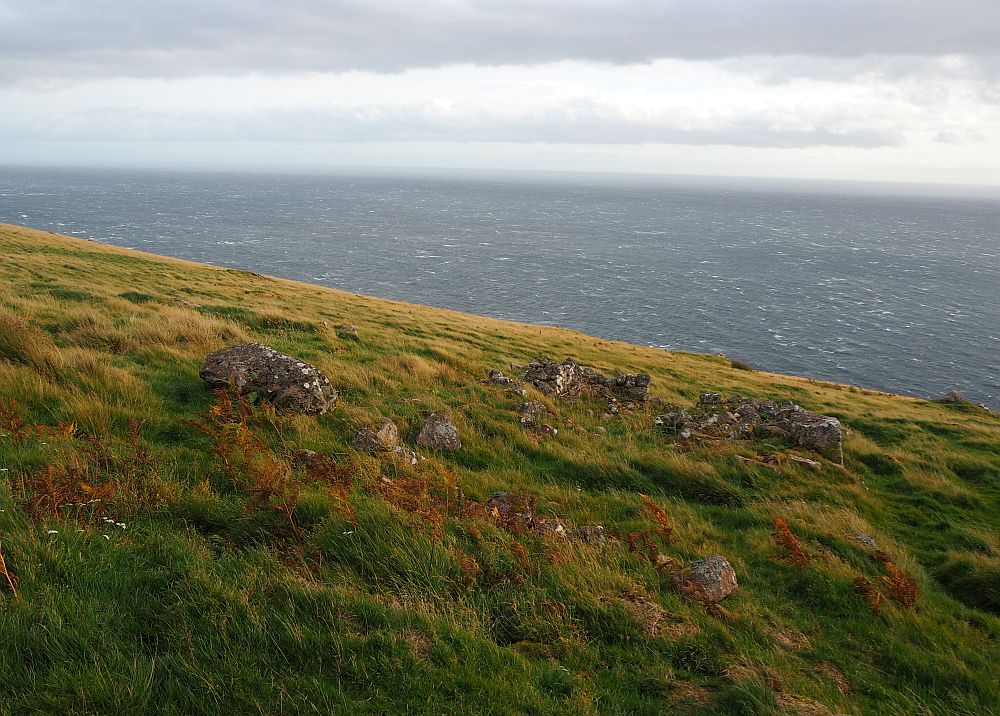
Badbea Clearance Village: About six miles north of Helmsdale off the A9. Watch for a small sign on the ocean side of the road. Park in the little parking area and follow the trail toward the sea. Be very careful here; it can be very windy and the village is on the edge of a cliff. The site is not guarded or set up for tourism except for the simple dirt path and a few signboards. No opening hours, but don’t try to get there other than in daylight! No admission fee. This website was created by and for Badbea descendants.
Laidhay Croft Museum
This is the only sight on this list that we didn’t visit. We meant to, but passed it by mistake, thinking it was just a tearoom. It was too many miles behind us to turn back by the time we realized. It turns out that the building with the tearoom sign is a modern one, while the museum itself is a long, white building nearby. Unlike the Timespan Museum, this tiny place is in an actual restored croft. Probably dating to the early 19th century, it is furnished to give a sense of what farm life might have been like in the Highlands before the Clearances.
Laidhay Croft Museum: Laidhay, about a mile north of Dunbeath, right on the A9, on the ocean side of the road. Open Easter-October 10:00-18:00. Admission in 2016 was £3 ($4/€3.50). I’m not sure what it is today.
Wick Heritage Museum
Wick is where many of the cleared crofters moved to at first, or rather they moved to a new section of town called Pulteneytown, built in 1808 for these displaced workers. Its thriving herring industry provided plenty of work … until the fish stocks collapsed in the 1930s.
The Wick Heritage Museum, which fills a row of houses in Pulteneytown, is crammed with information and artifacts from Wick’s history, particularly its fishing industry. Many of the Scottish people who were victims of the Highland Clearances worked in this industry first before emigrating away to the US, Canada or Australia. It also houses the Johnston collection, a trove of more than 50,000 photographic plates taken by three generations of professional photographers from the 1850s onwards. Many of these wonderful photos – portraits and street scenes – are on display at the museum. You can read my separate article about the Wick Heritage Museum here.
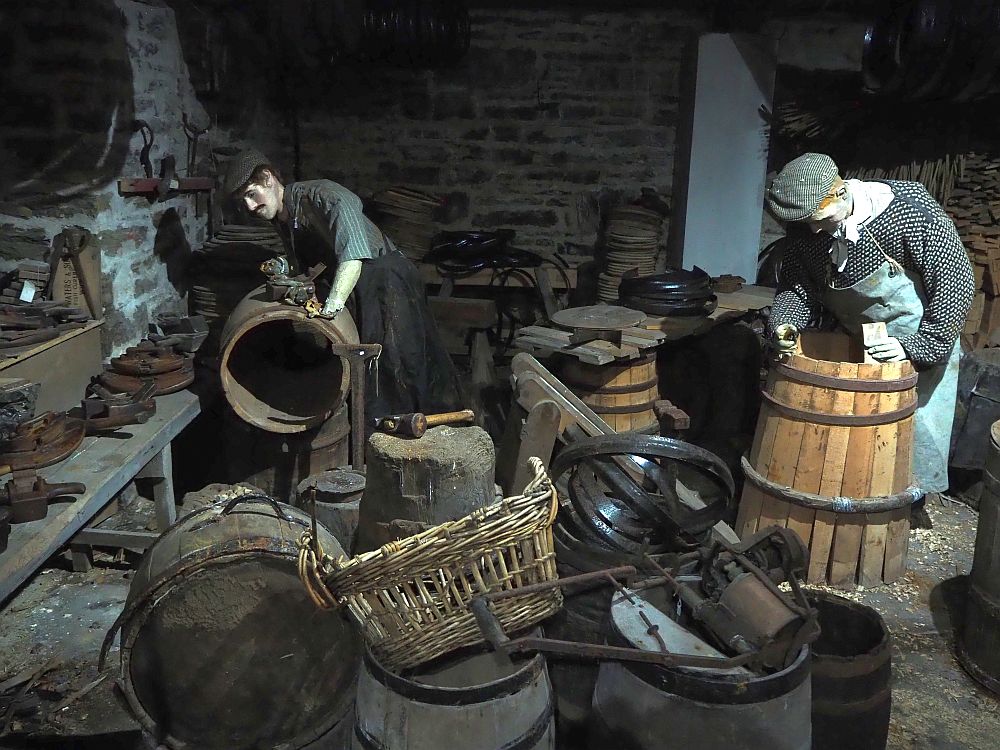
Wick Heritage Museum: 18-27 Bank Row, Wick. Open Easter-October, Monday-Saturday 10:00-17:00. Other times by appointment. Admission: £4 ($5/€4.50). Website.
Nucleus: The Nuclear and Caithness Archives
At the Wick airport, Nucleus houses the archives of this northeastern part of the Scottish Highlands, called Caithness, including parish records and census counts. If you have the time to do some research, this is the place to go. Bring along all of the information you have on your ancestry: names, dates, everything you have. Also bring an idea of what in particular you want to research. The staff will help get you started, but be prepared to spend lots of time on it!
Nucleus: Just opposite the main entrance to Wick Airport. Open Monday-Friday, 9:00-17:00. No admission fee. Website.
The top of the UK
If you’ve traveled as far as Wick, you might as well travel all the way to the top of the UK. John o’Groats is the traditional northernmost point and it’s where the ferry to the Orkney islands leaves from.
Factoid: John o’Groats is named after a Dutchman, Jan de Groot, who ran a ferry to the Orkneys.
Another factoid: John o’Groats is not actually the northernmost point. That honor should go to Dunnet Point, about two miles further north. A picturesque lighthouse stands at the end of the point, and a walk up the hill rewards you with some dramatic views. In the summer, you can see puffins nesting in the cliffs.
The beach at the village of Dunnet, not far away, is a lovely long strip of white sand and definitely worth a stroll.
Kate’s ancestry
Besides getting a feel for where her family came from, we learned something about Kate’s history just by accident.
Kate had assumed that her direct ancestors had been victims of the Highland Clearances based on records showing them spread across the small farms of northern Caithness in one generation, but then concentrated in Wick in the early 1800s just at the time that the herring industry was at its peak. Later they turned up in Edinburgh, then emigrated to the US. Given that timeline, it seemed logical that they were crofters who moved to Wick to find work, along with so many other displaced farmers.
However, after checking into a bed and breakfast outside of Wick called Thrumster House (which I definitely recommend if you’re either pursuing your family history or into hunting), we struck up a conversation with the owner and her daughter. It turned out that Kate’s great-great-great-great uncle worked on this estate as a caretaker. In other words, he wasn’t cleared. In fact, his son, Robert Innes Shearer, stayed in the area and became a noted naturalist and archeologist.
Take a look here at Thrumster House’s listing. It is well-situated for the northern half of this tour.
Along the way we actually found evidence of a lot of Kate’s long-ago relations, with family names appearing on objects and photographs at the Wick Heritage Center and on gravestones wherever we stopped to look. Clearly a great number of the family had stayed in the area and prospered in the nineteenth and twentieth centuries. Why her great-great grandfather left when other family stayed, we never learned. It’s fun to imagine a scandal, but the reality may have been economics (or an allergy to herrings).
Read this article from the opposite corner of the UK too: Discovering the Legend of King Arthur in Cornwall.
A Scottish Highland Clearances heritage tour
You’ll notice from the map below that the places I’ve listed in this article are all in a line along the coast of the northeast Scottish Highlands (Click on the icons to see which is which). We started in Aberdeen because that’s where my son goes to university. We then spent a week traveling up the coast and back down using a rental car. Besides the sites listed below, we visited several castles in Aberdeenshire, among other things.
To be more efficient, and to allow yourself time at Nucleus, I’d suggest starting your week in Inverness by flying there first and picking up your rental car there. You could visit some of these sights on the way up the coast and the rest on the way down. Make sure to stop now and then to just look at the amazing scenery: it’s a beautiful coastline!
If you don’t have much time to explore this region, one of these tours would give you a taste.
If you enjoyed this article, please share it on social media! Do you have Scottish ancestry? Have you been to Scotland to explore your heritage? Add a comment below!
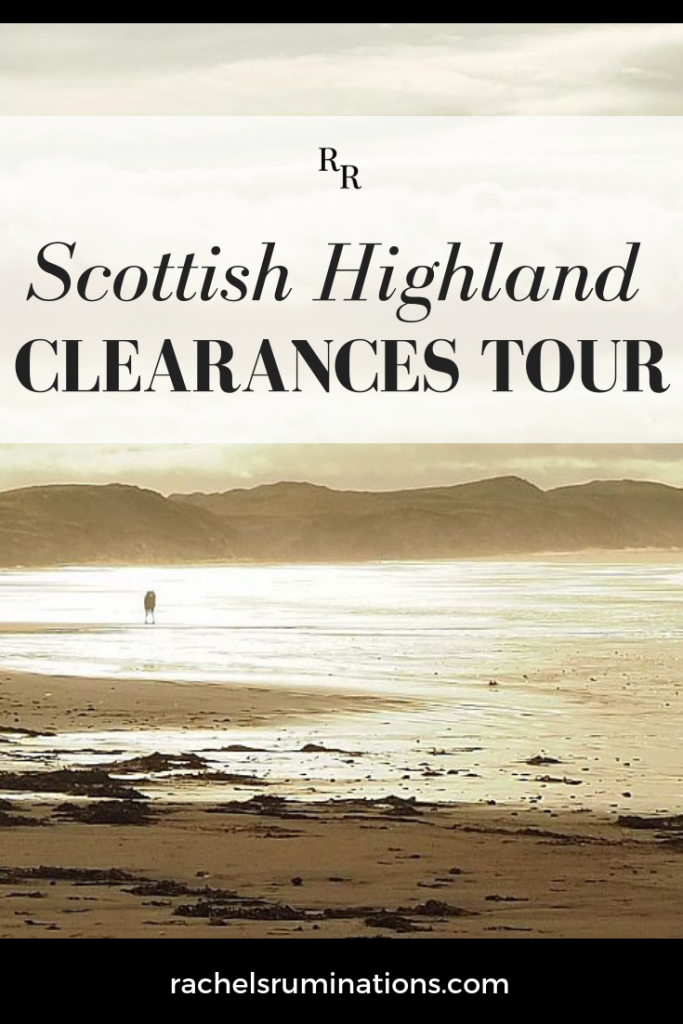


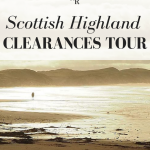
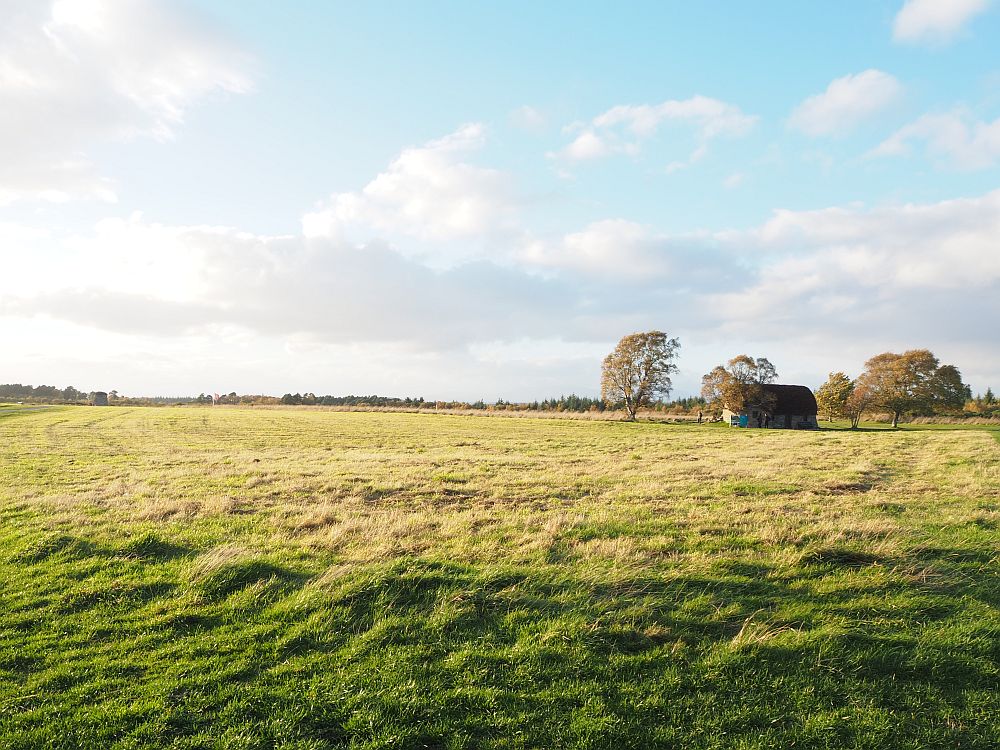
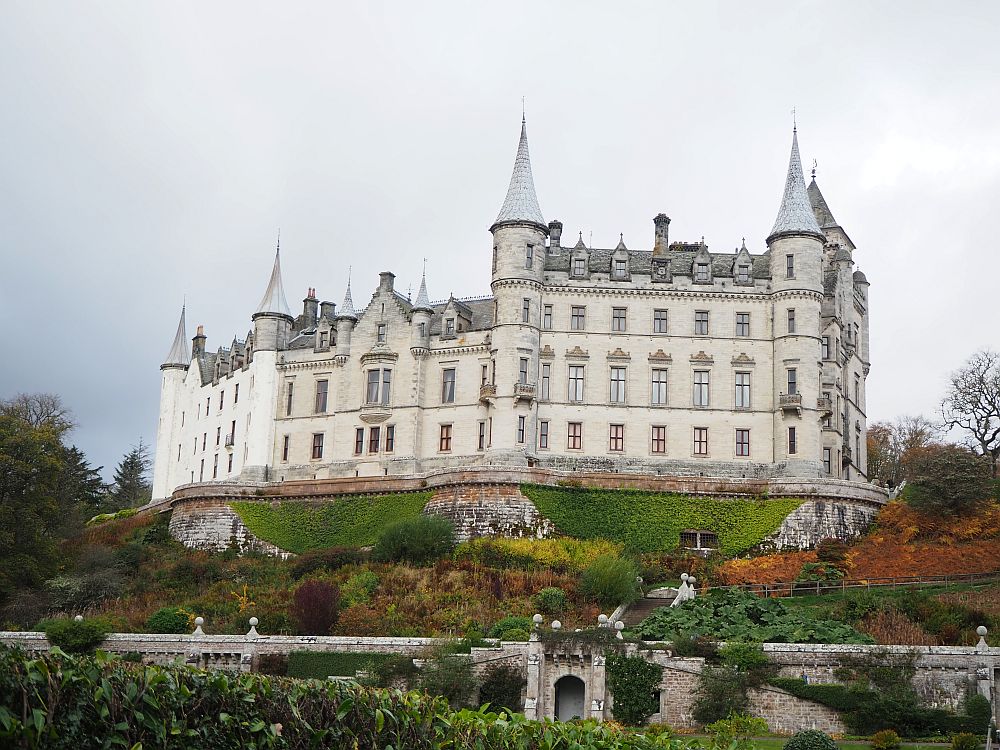
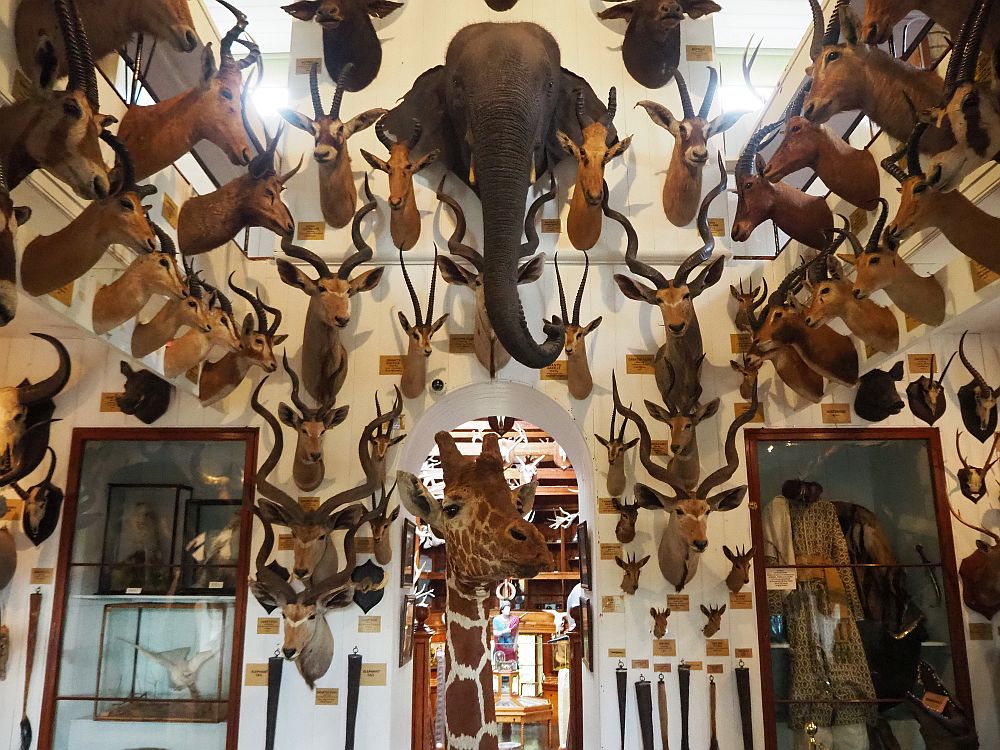

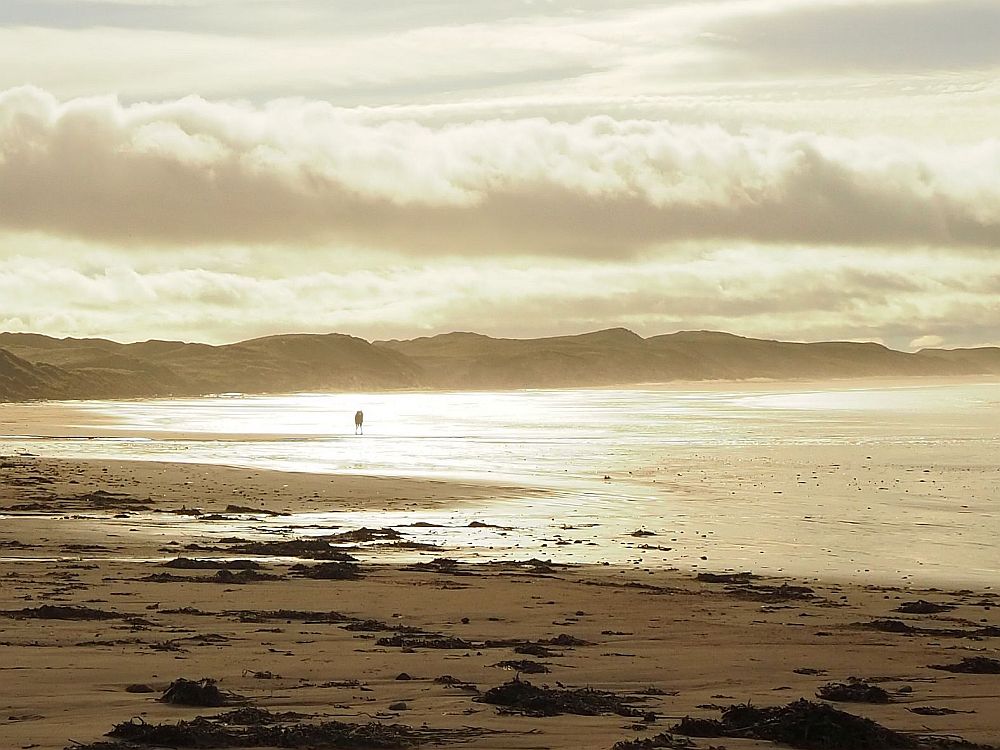
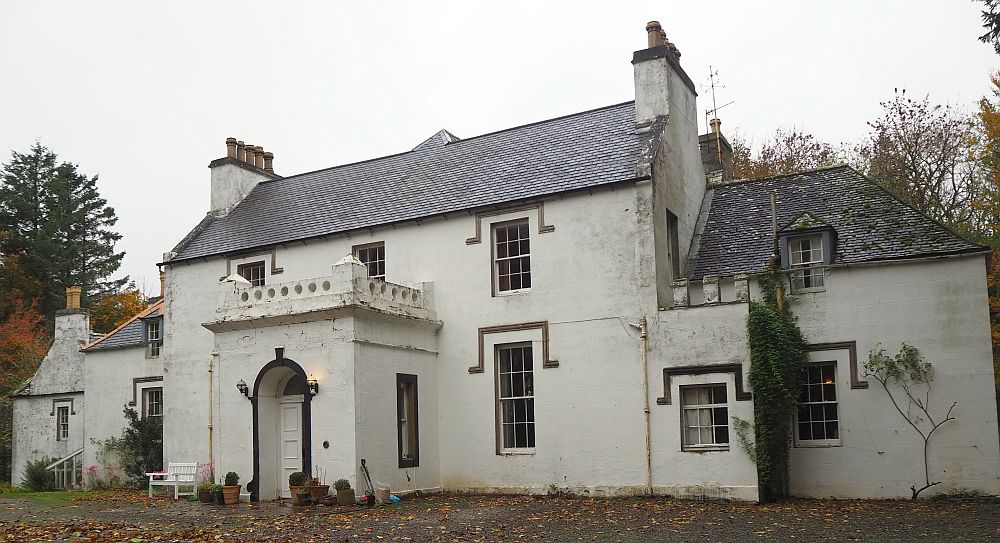


Gosh what an interesting post! Although I’m British by birth, I know very little about Scotland, but would love to visit. History, castles, and quaint B & B’s – bring it on 🙂 I also loved the Outlander series and of course to see the Culloden battlefield would be so interesting (and sad). In Westward Ho, Devon, where I’m from, there is a small hotel called Culloden too 🙂
I love the name Westward Ho! You would certainly not regret a visit to Scotland!
This was such an educational article. The photos are amazing and really help to picture ourselves in the Scottish Highland Clearances. Thanks for sharing.
Thanks, Jeff and Crystal!
Wow, that’s a lot of history but good job at keeping it concise, nice overview. We are fascinated by Scotland and have it on our ‘must go’ list. (Yes, we got hooked on Outlander.) Love the photos that help to, as you say, get a feel for what the evicted folks went through. Great references for a visit. Thank you.
Thanks for the kind words, Lori!
I’m a huge Outlander fan, and find myself getting enamoured with Scottish history while reading the books (and watching the series). This was a nice complement to feed my current obsession! 🙂
Well, then, you have to go there! The series really does capture the atmosphere and the drama of the landscape!
I really enjoy travel that puts an area into its historical context. It must have been fun to be traveling with a friend looking for her historical roots. I’ve never watched Outlander. Too much blood and gore. I’m looking forward to your next posts. We visited Scotland 2 years ago, but only Edinburgh, and through the Highlands to the Isle of Skye.
Thanks, Suzanne! It was fun! I usually don’t go on a trip with a theme in mind. I’ve only done it before in relation to travel with teenagers (a Harry Potter-centered trip in England and a World War I and II trip in Belgium and France). But it really brings it all together!
Scotland seems to be one of those places that is immersed in history, with something new to discover wherever you go. It must have been a fascinating trip!
Sounds like a wonderful itinerary along the coast—with such a rich history, castles and natural beauty, you’ve put Scotland on my bucket list.
Your travels to this part of Scotland sound like a great combination of heritage search, historic context, meandering and great scenery. We’re due to return to Scotland, and are drawn to Highland Clearances by your post.
Great information Rachel. My husband and I are hoping for a 2019 trip to Scotland and will look into Highland Clearances after reading your post. The area seems to cover all the areas we look for in a spot when we try and narrow down the itinerary. Plus I’m always on the hunt for beautiful castles and Dunrobin certainly qualifies!
Just to the south is Aberdeenshire, which has more castles. I’ll add a post about it soon.
What a beautiful and history-rich area to explore. I’ve never even heard of the Scottish Highland Clearances, though I have visited other areas of Scotland. I’d love to hike in the area to enjoy the dramatic landscape and views.
It would be a great place for a walking holiday. There’s a walking path along the east coast; the Badbea Clearance Village is on it. It would be a very dramatic hike.
There is a ferry that leaves from Scrabster just outside Thurso that goes to Orkney as well.